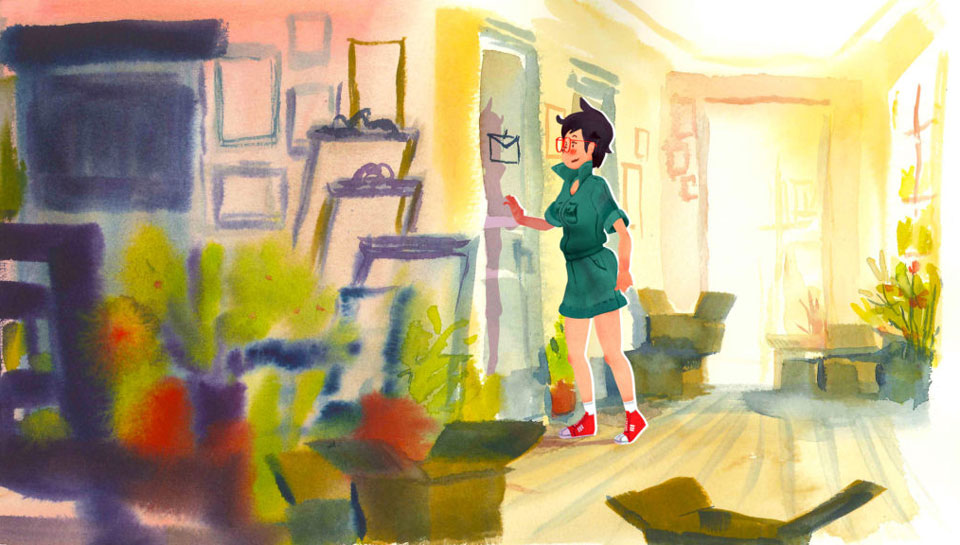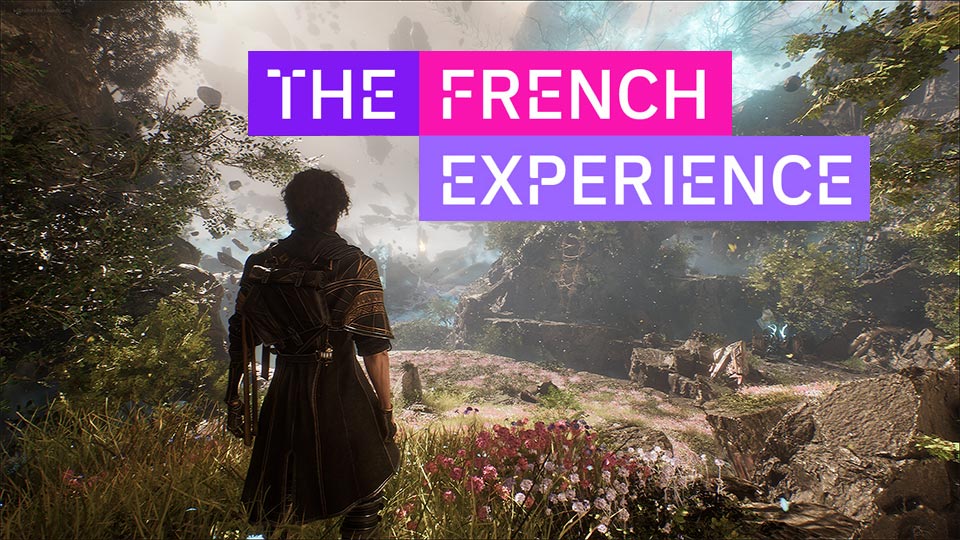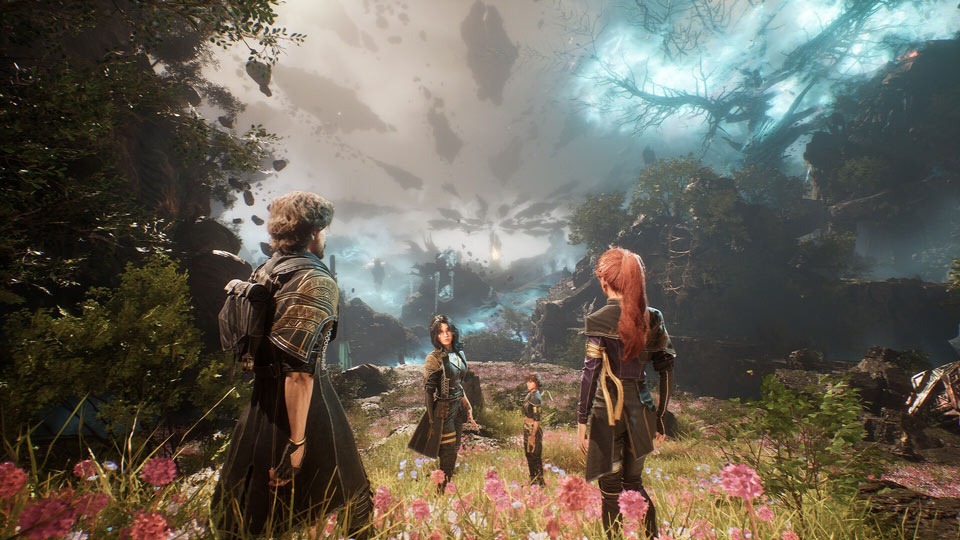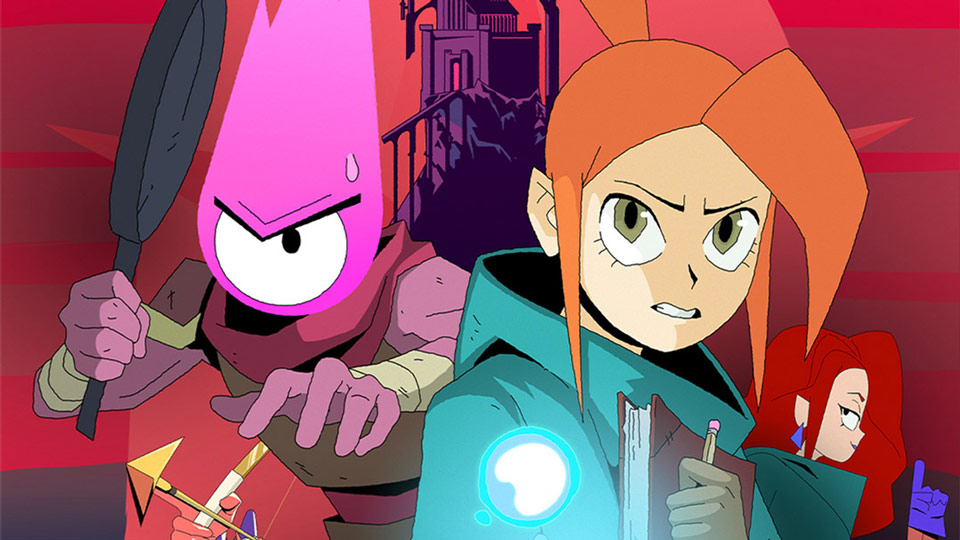How did the idea of Dordogne come about in your mind?
Cédric Babouche: I came to Bordeaux four or five years ago with a ready-made video game [Mr Tic Toc and the Endless City, a point & click, editor's note]. I met a lot of people in the field, and they advised me to make a smaller, more modest and less expensive project that would be just as beautiful and narratively interesting. So before I joined forces with Aymeric, I started working on the development of a new story, drawing on personal references about a little girl and her grandmother. I spent the first fifteen summers of my life at my great-grandmother's house in Dordogne, and it was the first place I visited when I came back to the Nouvelle-Aquitaine region. The connection I made between my own history and this department therefore came about quite naturally. Aymeric and I were already co-producing on other projects, and we were often in touch. The partnership between us worked well, so we decided to merge our companies. Hence Umanimation and Un Je Ne Sais Quoi were brought under the same banner, and we began in earnest on the development of Dordogne.
Aymeric Castaing: Our ambition is for Umanimation to be the media brand, and for Un Je Ne Sais Quoi to cover high added value and graphic content.
Did you employ this distinctive graphic style, with watercolour drawings from the start?
Cédric Babouche: Yes, right from the outset - it is representative of my style. I've been doing watercolours since I was 14, and Dordogne brings together a lot of my experience and expertise in mixing watercolours and 3D. Since it was a project I had been working on from the start, I also wanted to show my graphic technique. This is what gives the game its unique quality. We quickly decided to stay on paper and not to make the drawings digitally. Any digital scene would take us two days, whereas if I do it myself in watercolour, it takes me two hours. It made sense in terms of production, as well as providing something artistic.
As for gameplay, you have conceived a number of mini-games that break the monotony and allow you to avoid a succession of cinematic scenes...
Cédric Babouche: Exactly. Since it's essentially a narrative game - the idea is to find out what happened to this young woman who no longer remembers the last summer she spent with her grandmother – we quickly found we wanted to put in lots of visual, cinematic qualities. But we tried to find a way around so as to come up with something that would suit both of us. How could we tell the same story differently? We started to develop a series of very simple to use mini-games, often linked to the mechanics of words: for example, building a dialogue between the grandmother and the granddaughter. Another example would simply be doing some gardening with her, or having breakfast... There is no complexity, the aim is not to win or lose. For players young and old, the idea is to seamlessly get to grips with the whole story. We worked on a form of simplicity of play that is enjoyable and - we hope - fun.
How do you explain the international appeal of the game, which seems to have stirred up a lot of interest abroad?
Aymeric Castaing: There is obviously the quality of Cedric's work, he has been honing his technique for thirty years. The fact that he uses parallax to turn a hand-painted watercolour into a 3D object is bound to have had an effect. Dordogne has generated a lot of interest in Asia in particular, as it is perceived as typically French. It represents an almost Épinal image of the French artist in video game form. I think that foreigners recognise Dordogne as the embodiment of local craftsmanship. Sometimes we joke that we are making the Amélie Poulain of video games (Laughs.) It's almost a joke, but when you watch foreigners having fun trying to pronounce the word "Dordogne", you realise how much joy it brings them. They feel like they are speaking a little French! This suits us well, as it corresponds to the crafted, 'handmade in France' values that we want to convey.
Cédric Babouche: Apart from Assassin's Creed, video games depicting the French territory are quite rare. To echo what Aymeric was saying, abroad, people don't necessarily like the French, but they like France. (Laughs.) There is an admiration for our culture and our country. The Dordogne is the third most visited region in France, it's a well-known and inspiring place. I think we have something to play for, as independent creators, in showing this France.
What did you discover while working on your first game?
Cédric Babouche: As a director coming from linear content in TV and Film, I'm used to imposing my stories: once people are in front of the screen, they are passive. Ultimately, it's quite a binary offer. Whereas in a video game, you can create a story where you mark out a path, but you can be almost certain that the player will go elsewhere. And in terms of writing, it's quite surprising. It forces us to think about what the potential reactions of those holding the controller might be, and to revise the writing accordingly. Sometimes we even cut out entire passages because the amount of work can quickly overwhelm. We would not shy away from it on future projects, but we were on a learning on this first project. You therefore have to be modest about certain things. We obviously wanted to do bigger and better in many ways, but we're still extremely happy with what we've done.
Aymeric Castaing: I would say that the video game world is eminently friendly. It's full of passionate people, there's a lot of excitement and there are a lot of opportunities. The behemoths don't take up all the space and leave room for the smaller ones. And even though we're signed with a giant like Focus Entertainment, we're completely free with our content.
Cédric Babouche: We are given suggestions, but there are no conflicts, only exchanges in good faith and understanding.
You are also betting on transmedia content. Could we envisage Dordogne being accompanied by an animated film, for example?
Aymeric Castaing: Absolutely! In fact, we are already working on a short film called Les Ricochets. It is a prequel to Dordogne, where we learn how the grandmother came to settle in the region. Our next project will be both a video game and an animated feature film. We have developed a technique that allows us to combine pre-production stages that are common to both games and linear content.
The time saving must be enormous...
Aymeric Castaing: It is. All while guaranteeing the same quality, of course. We have already been selected to present the feature film at the co-production and pitching forum, Cartoon Movie in Bordeaux this year. The writing phase is underway and we are working on a truly transmedia development that spans literary, graphic and gameplay. It's a great story from which we take chapters and process them on the platforms they best fit with. One part will be a game, the other a long animation format and the rest a comic book. We are in the final stages of negotiations with a major comic book publisher to sign three projects at once: Dordogne, its successor, and another work in virtual reality.
Dordogne is expected to be released in the summer of 2023.
The game has received support from the CNC.





